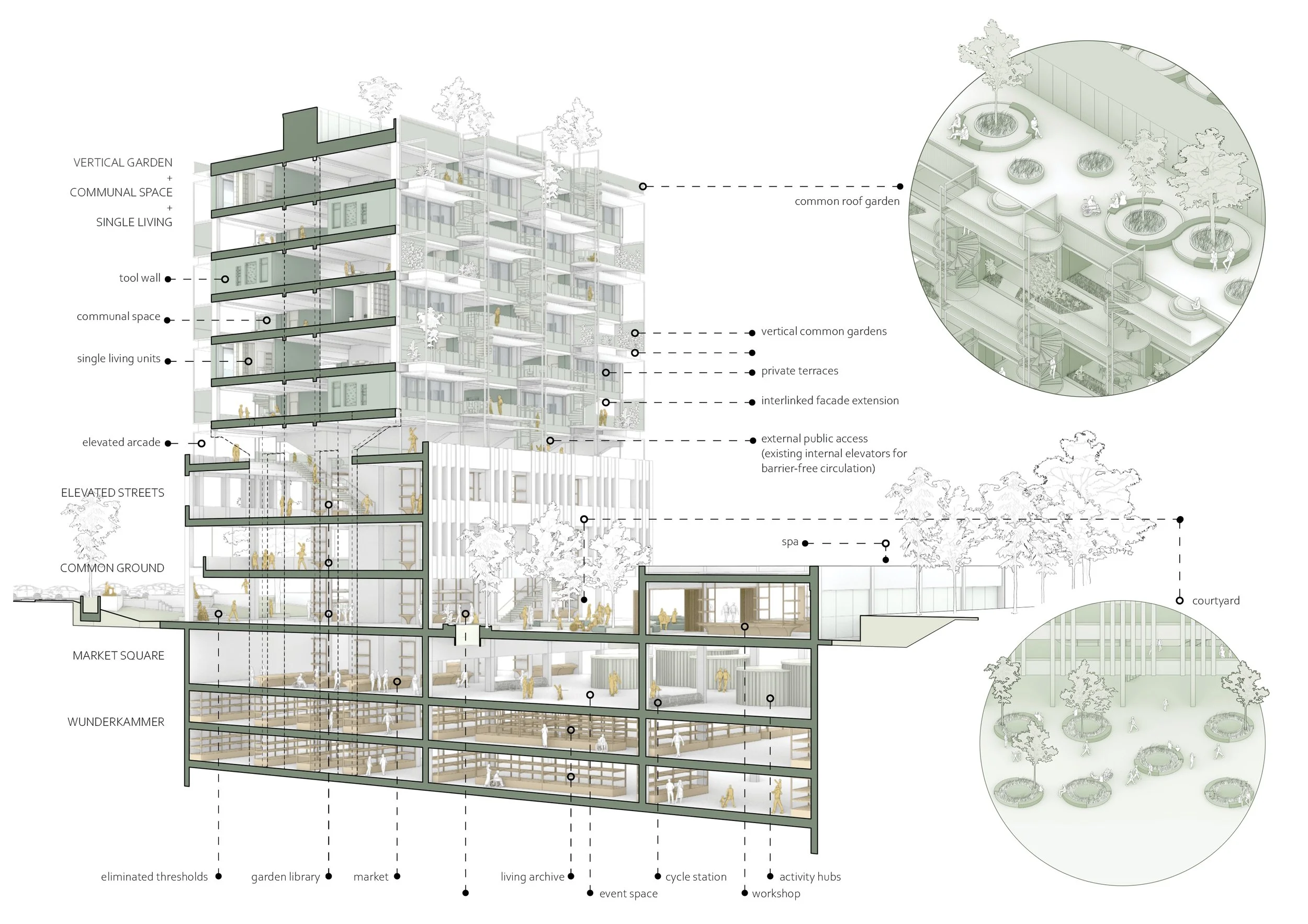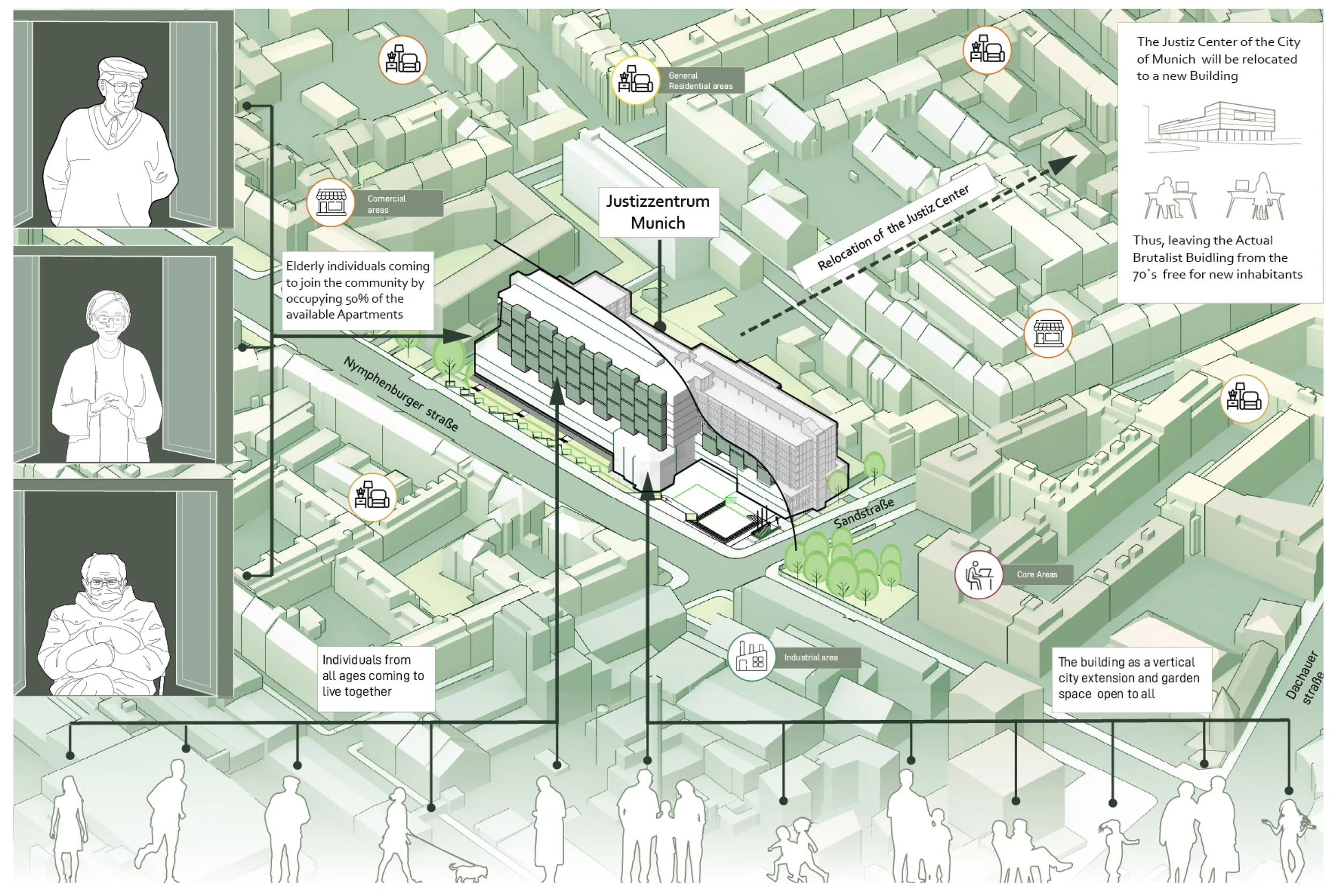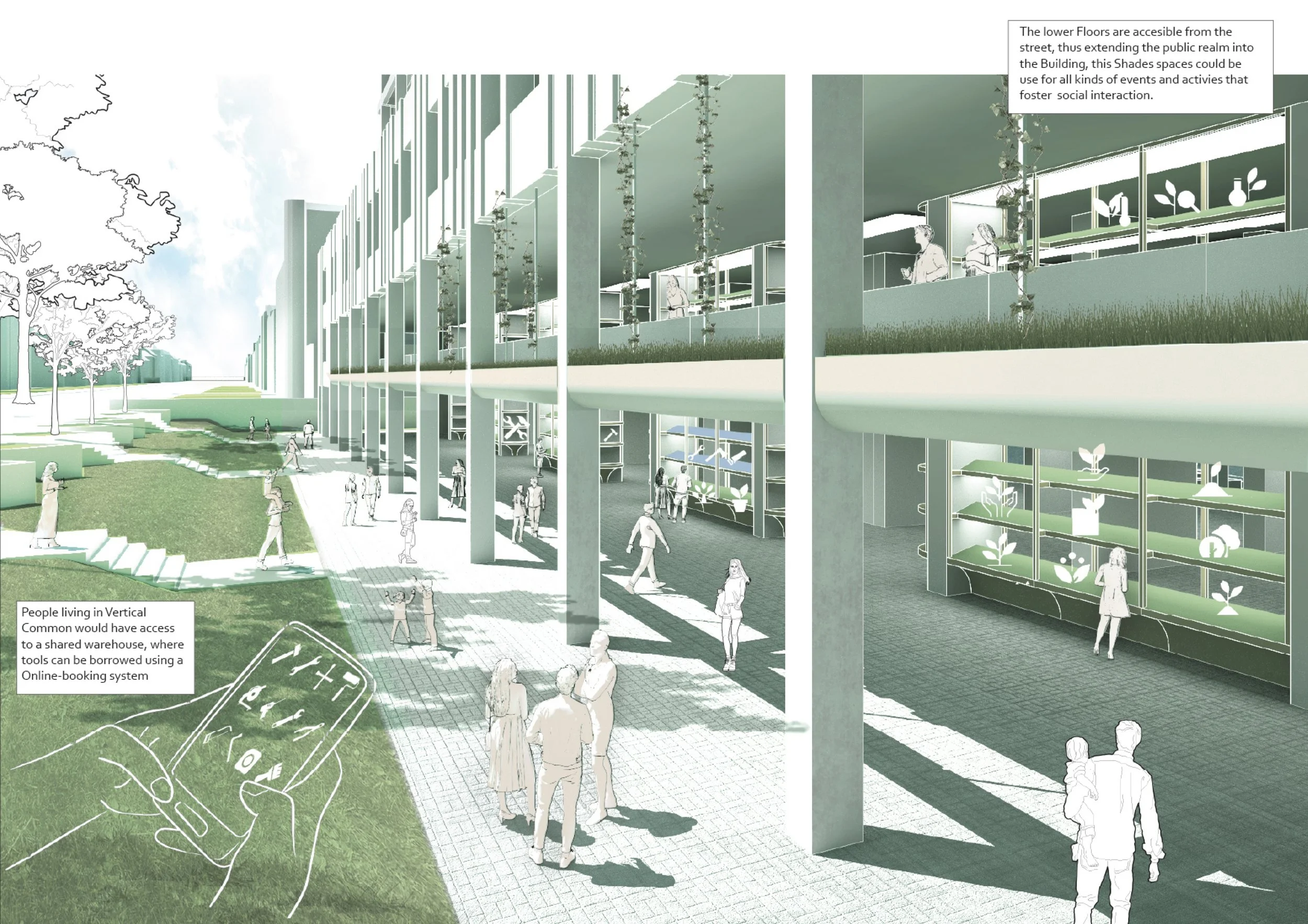“Vertical Commons” - Reimaging an old Justice Center
Function : Mix Use, Residence and Kulture
Location : Munich, Germany
Typ : Design Competition
Usable Area : 50 000 m² Aprox.
Colaboration : Lara Yegenoglu, Vilaarchitects
Growing Together
In the heart of Munich’s Maxvorstadt stands the Justizgebäude — a once-functional justice building constructed between 1972 and 1977. A new justice center is currently being constructed nearby, and once completed, the old Justizgebäude will lose its original purpose. Its fate mirrors that of many post-war buildings across the city: unloved, underused, and forgotten. Yet this building typology—representing the city’s largest stock of aging architecture—offers untapped potential. What if, instead of erasing these structures, we reimagined them as the foundation for future living?
Our proposal reclaims the Justizgebäude as a vertical city: Vertical Common. This is a manifesto for radical reuse and inclusive urban living. In doing so, we not only preserve a piece of Munich’s layered history but also respond to urgent contemporary challenges—environmental, social, and demographic.
The Building as Scaffold for Community
Demolishing the Justizgebäude would mean erasing embodied energy, historical memory, and architectural continuity. We propose to retain and radically transform it—not as a fossil, but as an active participant in the city’s future. Its brutalist frame becomes the scaffolding for a new kind of living: sustainable, intergenerational, and deeply communal. The rigid, separated floors are softened and connected by a new extended facade, transforming the building into a vibrant vertical commons.
Integrative Living for an Aging City
Germany—and especially Munich—is facing a growing housing crisis, marked by a shortage of affordable units and an increase in single-person households. At the same time, an aging population adds urgency to the issue. Vertical Common addresses both challenges. It offers barrier-free, inclusive housing for elderly residents—many of whom face isolation after the loss of a partner—while also inviting students, families, and younger generations. The living units themselves are modest, but they are enriched by generous shared infrastructure that supports autonomy without solitude, fostering connection and community.
A City Within a City
At the core of our concept is an extended vertical garden—a planted facade that connects floors and residents, breaking the isolation common in stacked housing. These communal gardens function like Schrebergärten, accessible to all residents through a shared tool library equipped with a digital booking system. Gardening becomes both a practical activity and a ritual of connection across generations.
The lower floors, accessible from the street, blur the boundary between public and private realms. These shaded, open areas host markets, workshops, performances, and communal events—extending Munich’s vibrant public life vertically within the building. Deep below, the “Wunderkammer” serves as a vast archive for personal belongings—a counterpoint to minimalist living and a tribute to memory and identity.
Cultivating Community Through Green Space
Central to our transformation is the building’s facade reimagined as a lush vertical garden—a living, breathing commons that extends the city’s green space upward. This verdant layer breaks the rigid separation of floors, creating interconnected terraces and shared outdoor rooms accessible to all residents. Here, young and elderly alike can nurture plants, share stories, and cultivate community. Complementing this green oasis is a large, shared tool library on the lower levels, where residents borrow gardening tools via a simple online system. This resource encourages collaboration and learning across generations, fostering bonds through the shared act of caring for the garden and each other. The Vertical Commons becomes more than a facade—it is a vibrant platform for social exchange, growth, and wellbeing.
Not a Building, but a Platform for Life
What makes a home, especially for the elderly? Familiar routines, personal belongings, and—above all—proximity to others. Vertical Common is designed to support these needs while inviting new forms of togetherness. It is not a utopia, but a testbed—a prototype for how we might reclaim our past to serve our collective future.






